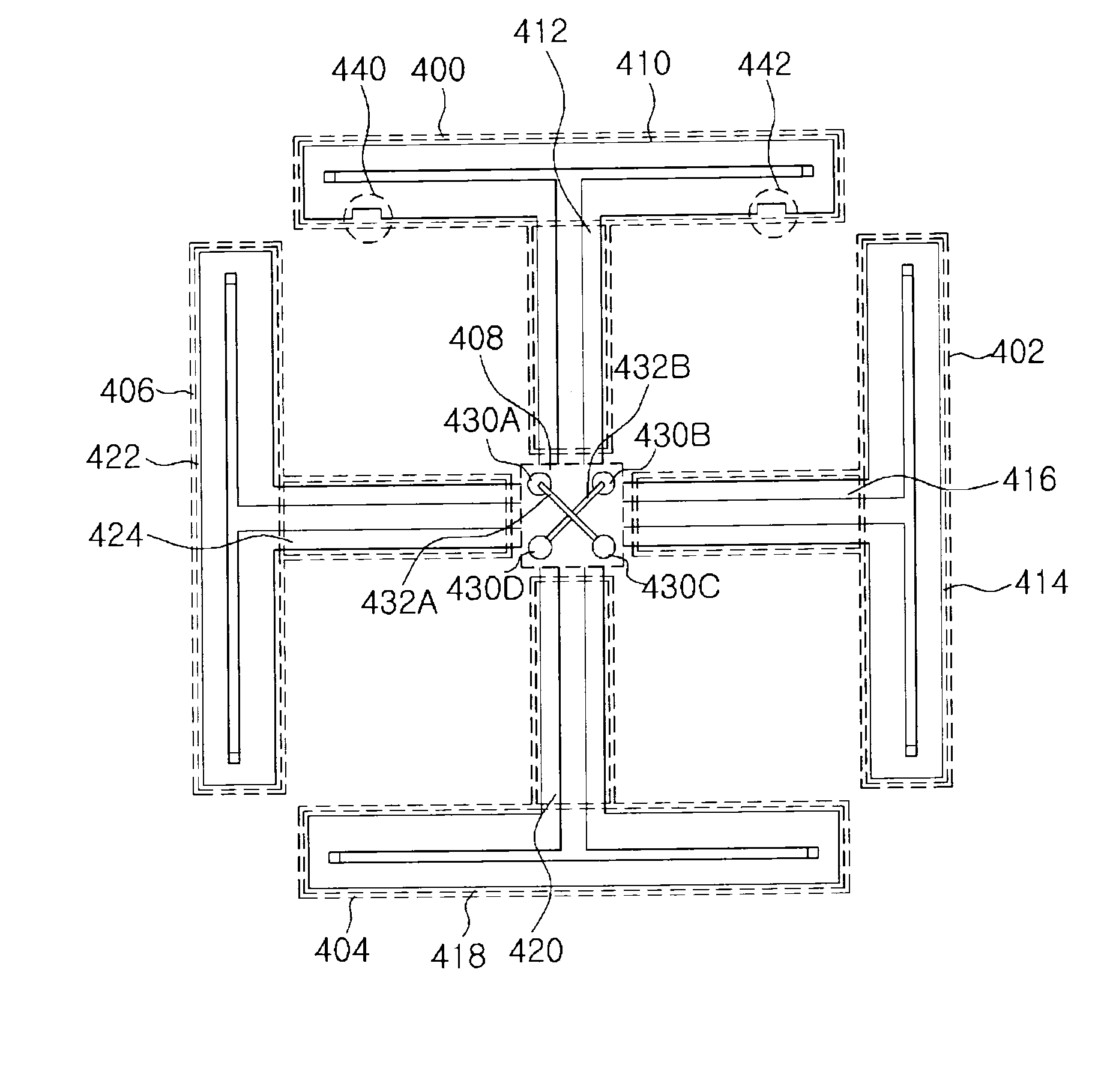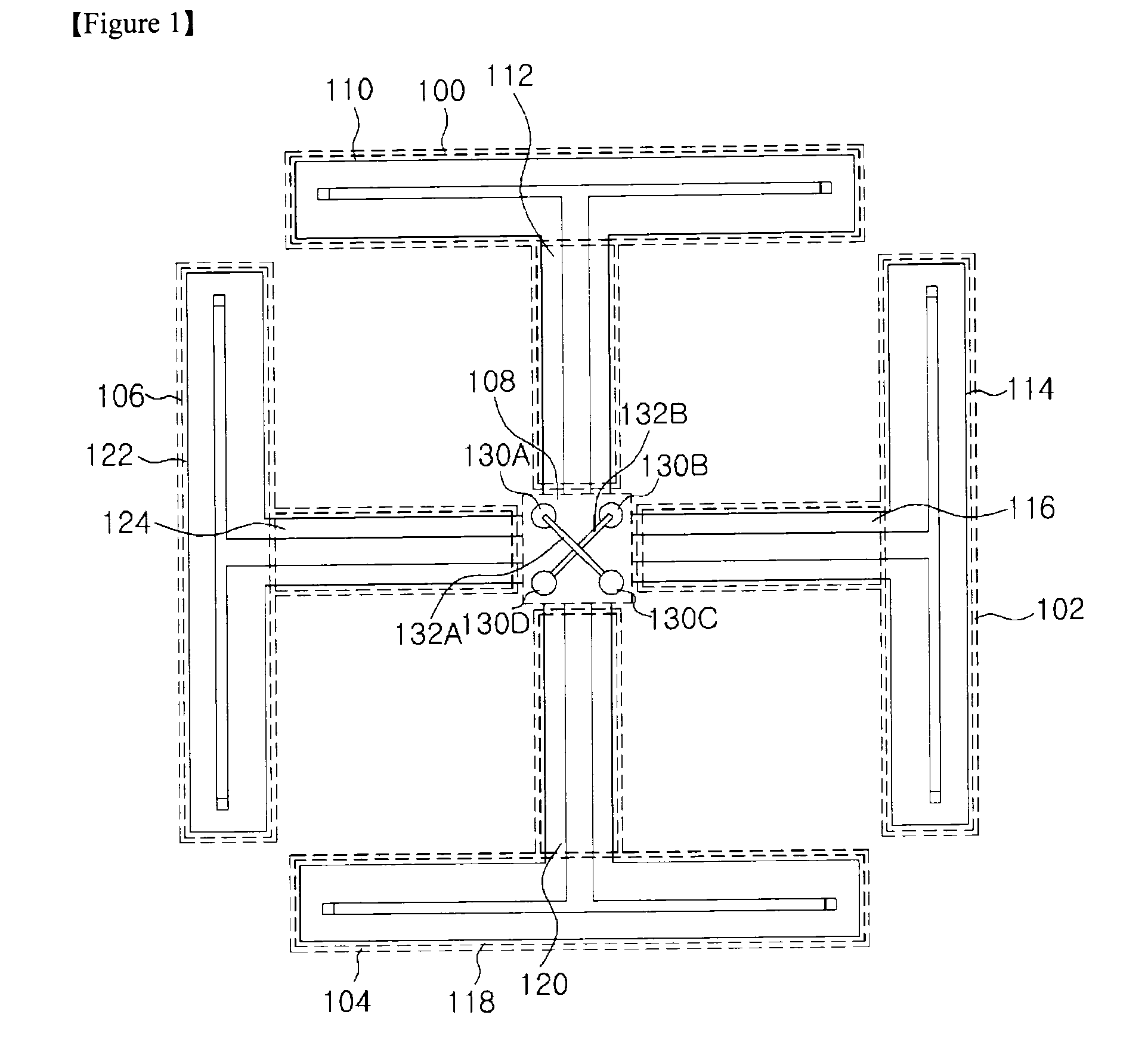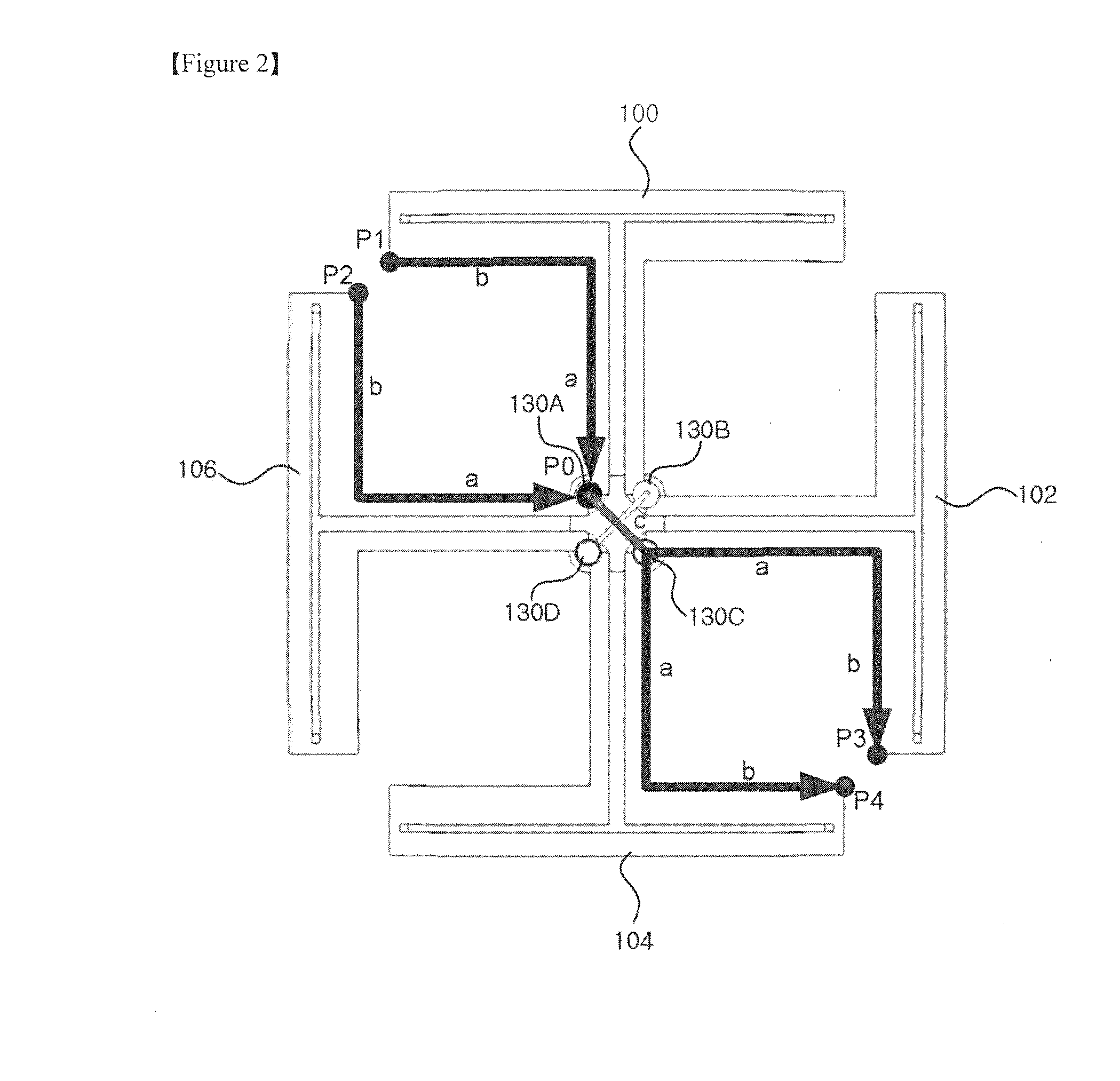Antenna for controlling a direction of a radiation pattern
- Summary
- Abstract
- Description
- Claims
- Application Information
AI Technical Summary
Benefits of technology
Problems solved by technology
Method used
Image
Examples
first embodiment
[0096]That is, the antenna uses a feeding method biased in a specific direction like the
[0097]Here, slits 720 and 722 are not formed at the dipole members 700, 702 and 704 connected to the feeding points 710A and 710B to which currents are inputted, and are formed to the third dipole member 710C not connected to the feeding points 710A and 710B. In this case, a distance POP1 between the first feeding point 710A and an edge of the first dipole member 700 and a distance POP2 between the first feeding point 710A and an edge of the fourth dipole member 706 are (a+b), respectively. However, a distance POP3 between the first feeding point 710A and an edge of the second dipole member 702 is (a+b+c), and a distance POP4 between the first feeding point 710A and an edge of the third dipole member 704 is (a+b+2c). As a result, a major axis 802 of a radiation pattern is more shifted in a right direction of +45° axis as shown in FIG. 8.
[0098]Accordingly, in the antenna of the present invention, ...
second embodiment
[0111]FIG. 11 is a plan view illustrating an antenna according to the present invention.
[0112]In FIG. 11, the antenna of the present embodiment includes a first dipole member 1100, a second dipole member 1102, a third dipole member 1104, a fourth dipole member 1106, a first feeding point 1110A, a second feeding point 1110B, a third feeding point 1110C and a fourth feeding point 1110D.
[0113]In the antenna of the present embodiment, slits 1120, 1122, 1124 and 1126 are formed to the dipole members 1100, 1102 and 1106 connected to the feeding points 1110A and 1110B to which currents are inputted.
[0114]When a radiation pattern of +45° polarization is considered, a distance POP1 between the first feeding point 1110A and an edge of the first dipole member 1100, a distance POP3 between the first feeding point 1110A and an edge of the second dipole member 1102, a distance POP4 between the first feeding point 1110A and an edge of the third dipole member 1104 and a distance POP2 between the fi...
sixth embodiment
[0150]Since elements of the present embodiment except the first dipole member 1600 are the same as in the sixth embodiment, any further description concerning the same elements will be omitted.
[0151]Projection members 1620 and 1622 may be formed to a feeding line member of the first dipole member 1600 as shown in FIG. 16. However, location and shape of the projection members 1620 and 1622 in the present embodiment are not limited.
[0152]In the above first to seventh embodiments, each of the antennas is a single device. However, the antenna may be used as one of radiation devices included in an array antenna. In this case, a user forms a slit and / or a projection member to a part of radiation devices, thereby adjusting direction of a beam pattern of the array antenna. Here, the radiation devices may be the same shape, or at least one radiation device may have different shape from the other radiation devices.
[0153]In one embodiment of the present invention, location and shape of a slit ...
PUM
 Login to View More
Login to View More Abstract
Description
Claims
Application Information
 Login to View More
Login to View More - R&D Engineer
- R&D Manager
- IP Professional
- Industry Leading Data Capabilities
- Powerful AI technology
- Patent DNA Extraction
Browse by: Latest US Patents, China's latest patents, Technical Efficacy Thesaurus, Application Domain, Technology Topic, Popular Technical Reports.
© 2024 PatSnap. All rights reserved.Legal|Privacy policy|Modern Slavery Act Transparency Statement|Sitemap|About US| Contact US: help@patsnap.com










